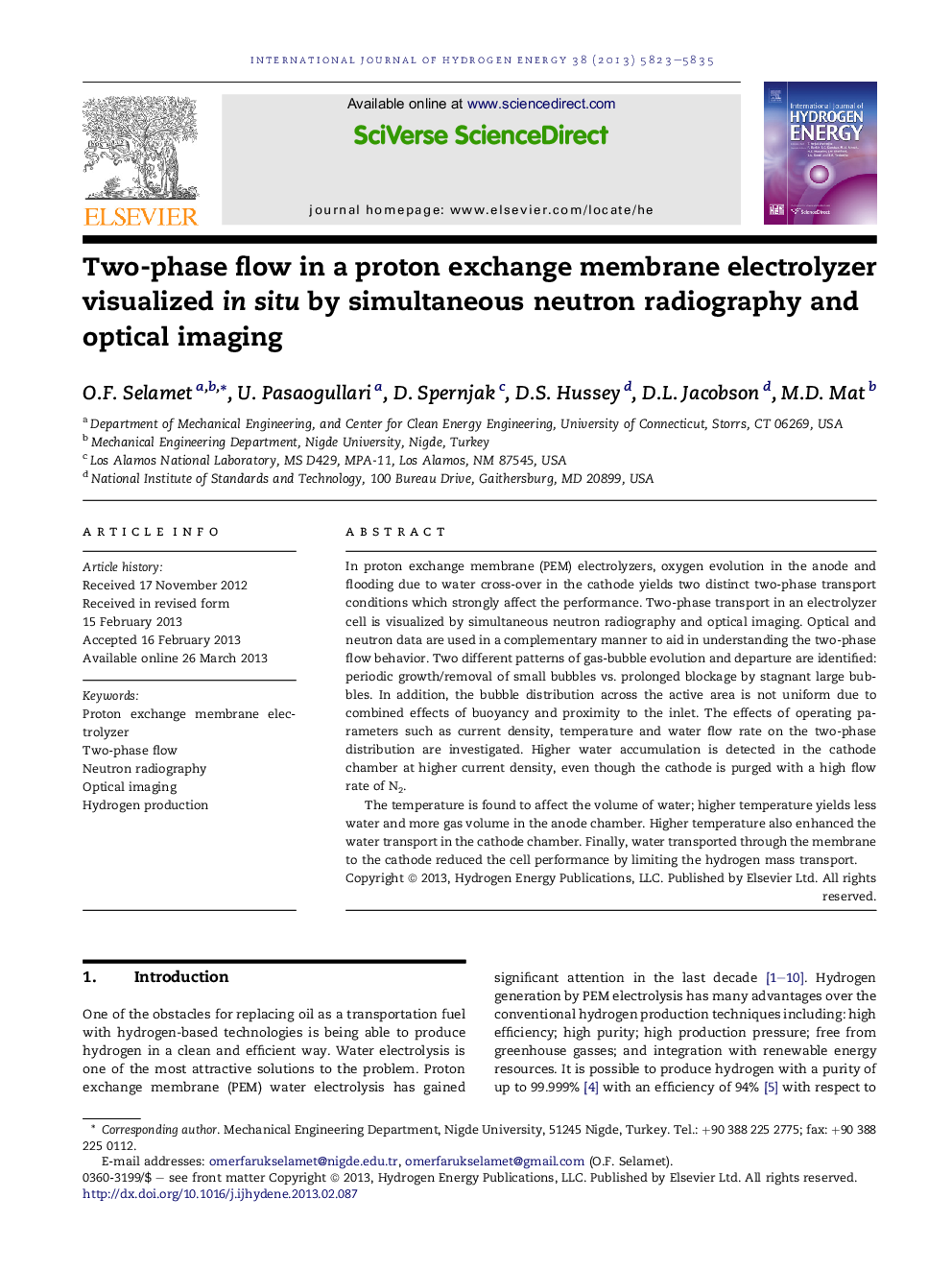| Article ID | Journal | Published Year | Pages | File Type |
|---|---|---|---|---|
| 1281693 | International Journal of Hydrogen Energy | 2013 | 13 Pages |
In proton exchange membrane (PEM) electrolyzers, oxygen evolution in the anode and flooding due to water cross-over in the cathode yields two distinct two-phase transport conditions which strongly affect the performance. Two-phase transport in an electrolyzer cell is visualized by simultaneous neutron radiography and optical imaging. Optical and neutron data are used in a complementary manner to aid in understanding the two-phase flow behavior. Two different patterns of gas-bubble evolution and departure are identified: periodic growth/removal of small bubbles vs. prolonged blockage by stagnant large bubbles. In addition, the bubble distribution across the active area is not uniform due to combined effects of buoyancy and proximity to the inlet. The effects of operating parameters such as current density, temperature and water flow rate on the two-phase distribution are investigated. Higher water accumulation is detected in the cathode chamber at higher current density, even though the cathode is purged with a high flow rate of N2.The temperature is found to affect the volume of water; higher temperature yields less water and more gas volume in the anode chamber. Higher temperature also enhanced the water transport in the cathode chamber. Finally, water transported through the membrane to the cathode reduced the cell performance by limiting the hydrogen mass transport.
► The neutron imaging and optical visualization are applied in a PEM electrolyzer. ► The effects of operating parameters on the two-phase distribution are investigated. ► The water transported to the cathode reduces the cell performance. ► The neutron imaging is a useful technique for investigation of void fraction.
